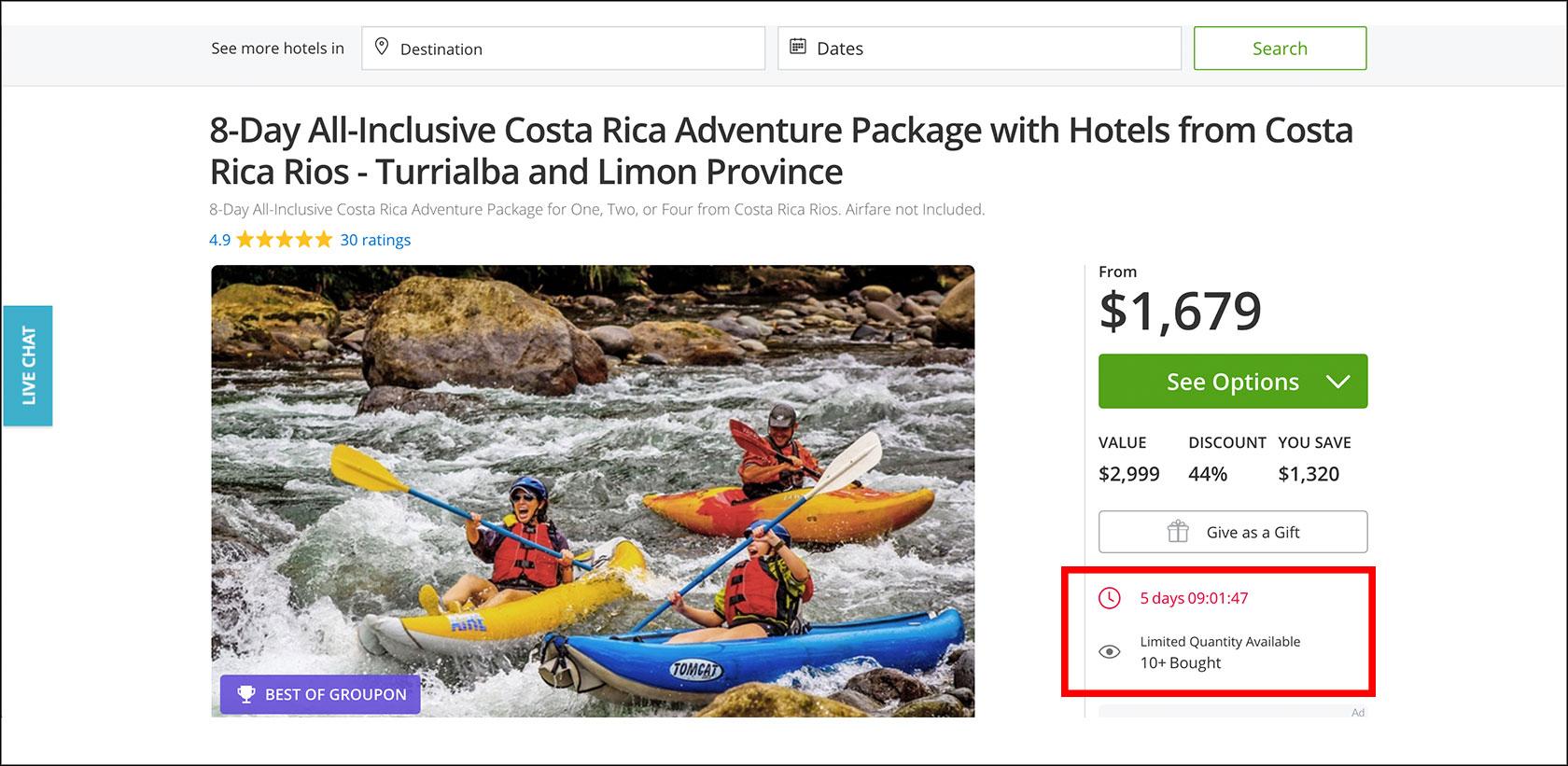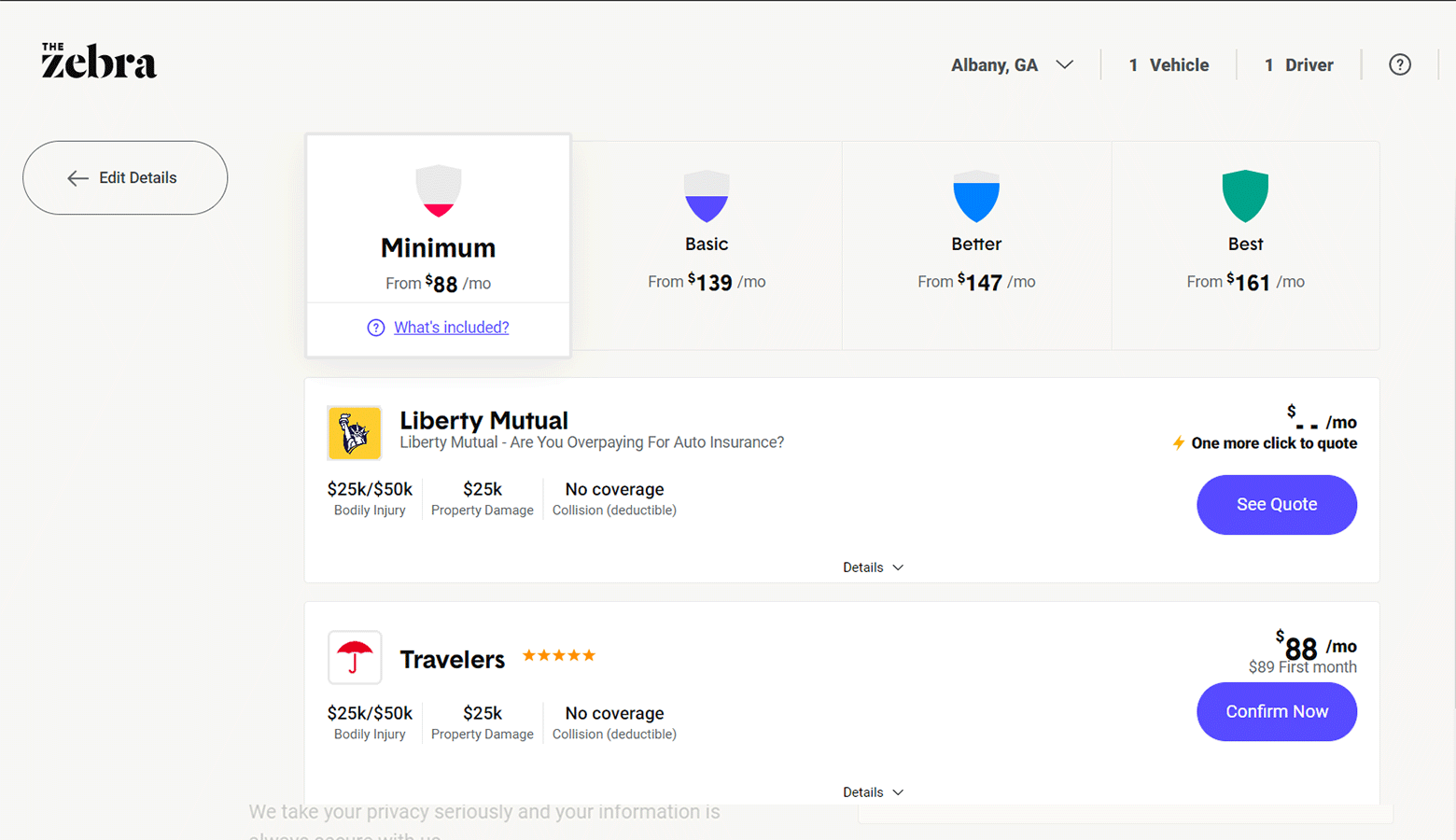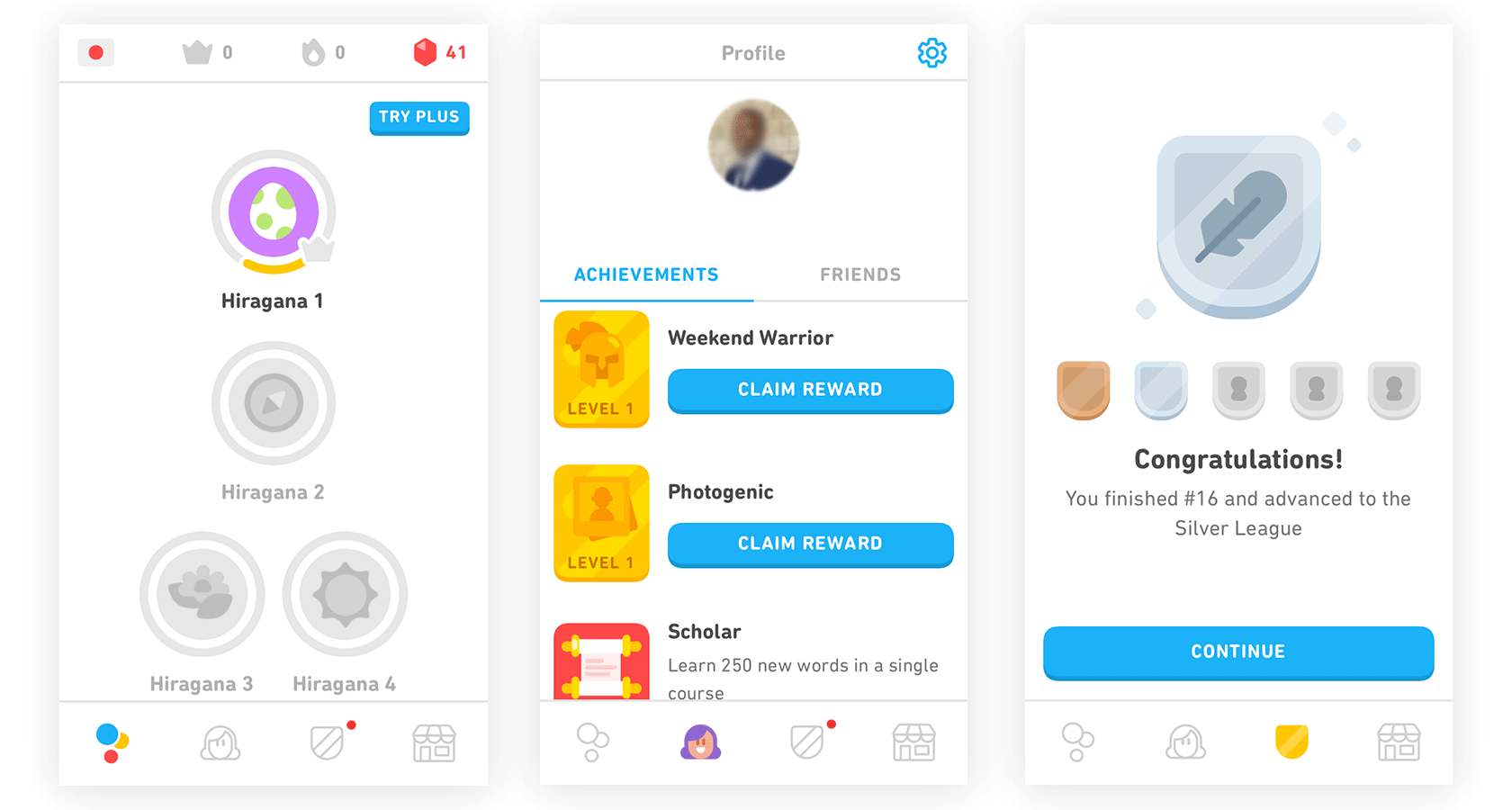Pixels of Influence: Breaking Down Persuasive Design Principles
There’s a lot for people to consider when making decisions. Used properly, persuasive design principles are a powerful tool for building meaningful products that help people make better decisions.
There’s a lot for people to consider when making decisions. Used properly, persuasive design principles are a powerful tool for building meaningful products that help people make better decisions.
Michael is an experienced product designer who’s partnered with tech firms, startups, and education companies to deliver better products.
Expertise
PREVIOUSLY AT

Don’t make me think, Steve Krug wrote on the premise that a good software program or website should let people accomplish their intended tasks as easily and directly as possible.
Each day, people face making thousands of decisions; some sources suggest upwards of 35,000 decisions per day, though this number is somewhat suspect as it is difficult to estimate something predicated on personal bias. Understanding how and why people interact with products and employing persuasive design principles based on that information can ease decision-making anxiety and improve overall user experience.
Defining Design Using Persuasion
There is power in suggestion. Persuasive design uses an understanding of human behavior to influence decision-making, most commonly on eCommerce and travel sites. The science of persuasion is also used to improve experiences across the web on desktop and mobile devices and in wearable technology.
Is deception ever ethically justifiable? Understandably, the use of persuasive design brings up moral and ethical issues—there is a fine line between deceptive design and using the art of persuasion to create compelling user experiences. Deceptive practices include using dark patterns—carefully crafted designs that intentionally trick users into taking an action without full awareness of what they’re doing (i.e., hidden costs, disguised ads, or trick questions on sign-ups).
In Toward an Ethics of Persuasive Technology, authors Daniel Berdichevsky and Erik Neuenschwander suggest keeping this golden rule in mind when it comes to persuasion:
“The creators of a persuasive technology should never seek to persuade anyone of something they themselves would not want to be persuaded.”
Persuasion can be an invaluable tool that skilled designers use for good. Persuasive design can make digital experiences frictionless and easier to use. For example, the online banking company Simple makes tipping at a restaurant easy. They use two persuasive design concepts—authority and social proof—to persuade users to make a generous tip by showing the percentage (social proof, as 20% is implied as “standard”) and amount (authority, as customers trust a bank to calculate an amount for them) when paying for a meal.

Common Persuasive Design Principles
There are six persuasive design principles commonly used by UX designers to enhance user experiences: framing, reciprocity, scarcity, social proof, authority, and salience.
Framing
People tend to make comparisons before buying a product or signing up for a service because, naturally, they want to make decisions that bring the most value. The persuasive design principle of framing compares different options in an appealing way. This principle can be thought of as the goldilocks principle (the option that is “just right”).

Reciprocity
Reciprocity is the principle of returning the favor. People feel obligated to repay favors because they don’t want to feel like they’ve taken advantage of someone’s generosity (including that of a business).

Scarcity
The scarcity principle states that the less of something there is, the more valuable it becomes. People tend to be more decisive if they know something will not last much longer or that quantity is limited.

Social Proof
Social proof is the idea that people will usually do what they see others do, or they’ll wait until they see others doing something to do it themselves. Social proof relieves anxiety because there is reassurance that they aren’t the only ones taking action.

Authority
The persuasive design principle of authority illustrates that people look to experts and trusted sources for information they can use when making a decision. When people see a recommendation from an expert, they are more likely to take action.

Salience
The salience principle shows that people pay attention to what is most important to them at that moment. The Google search page is a great example of this persuasive design principle.

Understanding Persuasive Design Principles
Persuasive design principles are at work in the majority of decisions people make, whether they realize it or not. People often ask themselves three questions before making decisions, and considering those questions allows designers more insight into how to create persuasive designs.
- How much time and effort will it take?
- How much does it cost?
- What benefit is there?
How Much Time and Effort Will It Take?
People are busy, and they have grown to expect instant gratification. The amount of time and effort something will take is the most common question people ask when approaching a task and deciding whether or not to take it on. By understanding this behavior, designers can better serve the online community by setting expectations early and incorporating immediate feedback and results.
Simple interfaces that prominently display the most salient information for the current task speed up interactions because people want to spend the least amount of time and effort to complete a task.

Simple interfaces with singular focus allow people to send cash to others in seconds with Cash App or check their balances instantly with Capital One before making a purchase.
Display Items or Tasks at the Appropriate Moment
Signing up can be a tedious process, especially when a person’s priority is to complete a purchase or book travel arrangements. Travelocity simplifies the procedure by including it as part of the initial booking process.

People subconsciously consider how much time or effort an action will take and look for the path of least resistance; the chance to save time persuades them to follow through. Travelocity boasts a two-minute booking process from start to finish, even when booking for the first time and without an account.
The Zebra, an insurance comparison site, makes getting an insurance quote easy. Instead of presenting a seemingly endless form with a multitude of questions, it breaks them into smaller segments—known as “chunking” in UX design, where smaller parts make a task appear less intimidating, helping to motivate people to complete them. As the old adage goes: How do you eat an elephant? One bite at a time.

By establishing upfront that the process will be “fast & simple,” The Zebra demonstrates they value people’s time. They also only show what is immediately relevant by fading subsequent questions. Since people can only answer one question at a time, it helps them move through the process more effectively if the focus falls on the current question alone.
How Much Will It Cost?
The search for the best value is one of the main factors that influence decision-making. In this case, persuasive design principles like framing can be useful.
Good Examples
The Zebra presents insurance options in a way that encourages people to purchase the best package for their price range. By using the framing principle and a visual indicator to show that the “minimum” package is lacking in value, people are less likely to choose that option. In contrast, other options appear more appealing.

Netflix offers its full services for free for an entire month. This free trial persuades people to sign up, as they don’t have to consider the cost at the outset. And it works. About 9% of Netflix users at any given time are trial users, but 93% of those trial users convert to paying subscribers, according to Merriman Capital stock analyst Eric Wold.

Inviting people to try the product by offering free trials can help them get over their cost resistance and come to appreciate the practical benefits that may motivate them to subscribe.
What Benefit Is There?
“What’s in it for me?” “Why should I do this?” People frequently ask themselves these questions when considering a purchase or action because they’re looking for benefits. Multiple persuasive design principles including reciprocity, scarcity, authority, and social proof can be applied to encourage the desired action.
How can designers use these four UX principles to persuade people as they consider the benefits of a product?
Scarcity
Travelocity uses the scarcity principle to persuade people to book travel arrangements before they are no longer available.

Hotels.com alerts users that hotel prices may go up, motivating them to go ahead and book accommodations at the currently cheaper rate.

Social Proof
The persuasive design principle of social proof—for example, reviews from others—influences people to make purchases. People want to make decisions that offer the highest benefit, and social proof is an assurance that others have made similar decisions with positive outcomes.
Travelocity advocates for customers to protect their travel arrangements for an additional fee. Showing that others have purchased this protection encourages the currently active customer to do the same.

Authority
People’s response to authority is almost automatic. Legitimate and credible sources have a strong influence on decision-making, and companies name drop recognizable “experts” when trying to sell products. Think of electric toothbrushes that are “Accepted by the American Dental Association,” or diet plans approved by heart or diabetes associations.
Restaurants also understand the principle of authority. A local Maryland’s Fried Chicken restaurant entices new customers to dine in by boasting of celebrities that eat there.

When trying to make value and benefits clear, designers can use credible research, authority figures, or other endorsements to make products more appealing.
Accomplishment
People like the feeling of accomplishment and feel uneasy when things are left unaccomplished. This natural human tendency creates an opportunity for designers to support people toward fulfilling a personal goal.
Simple banking’s Goals feature motivates people to keep saving money in order to reach their goal by using a visual progress bar. Seeing the incomplete bar encourages customers to continue saving to fill the bar and reach their target.

Duolingo does a good job in making the value of its product evident. People can see the benefits of the application, both in the short term—by way of progress bars and rewards—and long term—as the greatest value of using Duolingo is learning a new language.

Conclusion
People make many decisions daily and have a lot to consider before making them. By using these principles of persuasion, skilled product designers can improve user experiences in a way that simplifies decision-making.
Innovation in technology requires designers to continue to keep up with the latest techniques and methodologies. Understanding human behavior gives them the means to improve how people interact with technology day to day. Used ethically, persuasive design principles are a powerful tool for building meaningful products that help people make better decisions.
Further Reading on the Toptal Blog:
Understanding the basics
What is persuasion in consumer behavior?
Persuasion in consumer behavior can refer to the way brands implement persuasive design techniques to influence a person’s decisions. These include techniques like authority (using experts to advise people), scarcity (showing limited quantities or time to buy), and framing (comparing multiple options).
Why is persuasion so important?
Persuasion in design is used to evoke particular actions from people using a product or visiting a website. Without implementing persuasive design principles, brands have little influence over whether people will do things like sign up or make a purchase.
What is persuasion used for?
Persuasion in design is used to influence consumer behavior. Persuasive design principles (including scarcity, authority, accomplishment, and framing) are implemented to get people using a product or website to take certain actions or make certain positive decisions.
Why is social proof important?
Social proof as a persuasive design principle helps people feel comfortable with the choices they make in an app or on a website, including purchase decisions. If other people have already made the choice a person is considering with positive results, it makes it feel “safer” to make the same decision.
What is the role of reciprocity?
Reciprocity is the idea of returning a favor. In persuasive design, if a company offers a free trial, free sample, or some other “favor” to a person, they feel more obligation to then make a purchase or otherwise take an action the company requests from them.
Michael Craig
Albany, GA, United States
Member since November 7, 2016
About the author
Michael is an experienced product designer who’s partnered with tech firms, startups, and education companies to deliver better products.
Expertise
PREVIOUSLY AT


